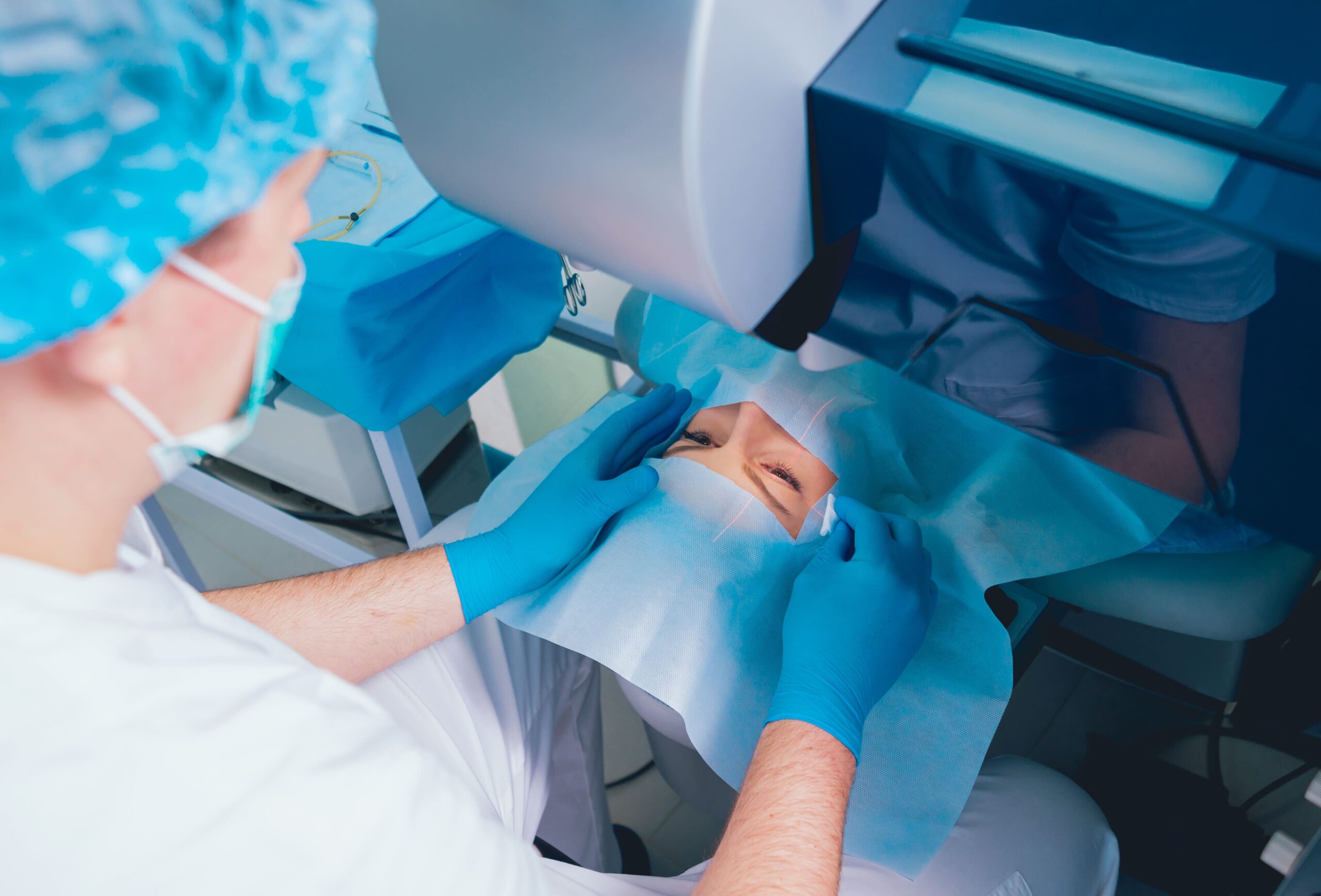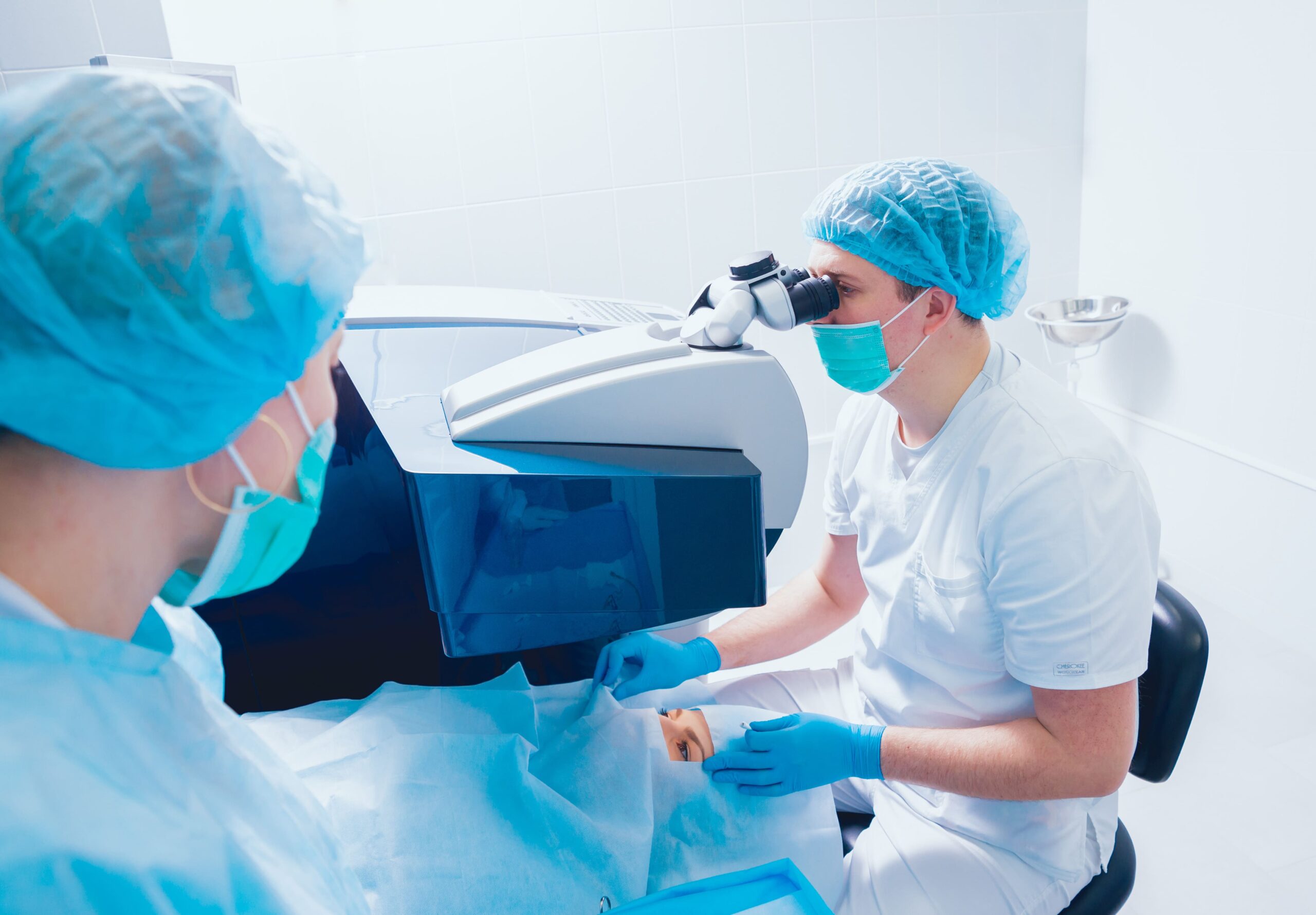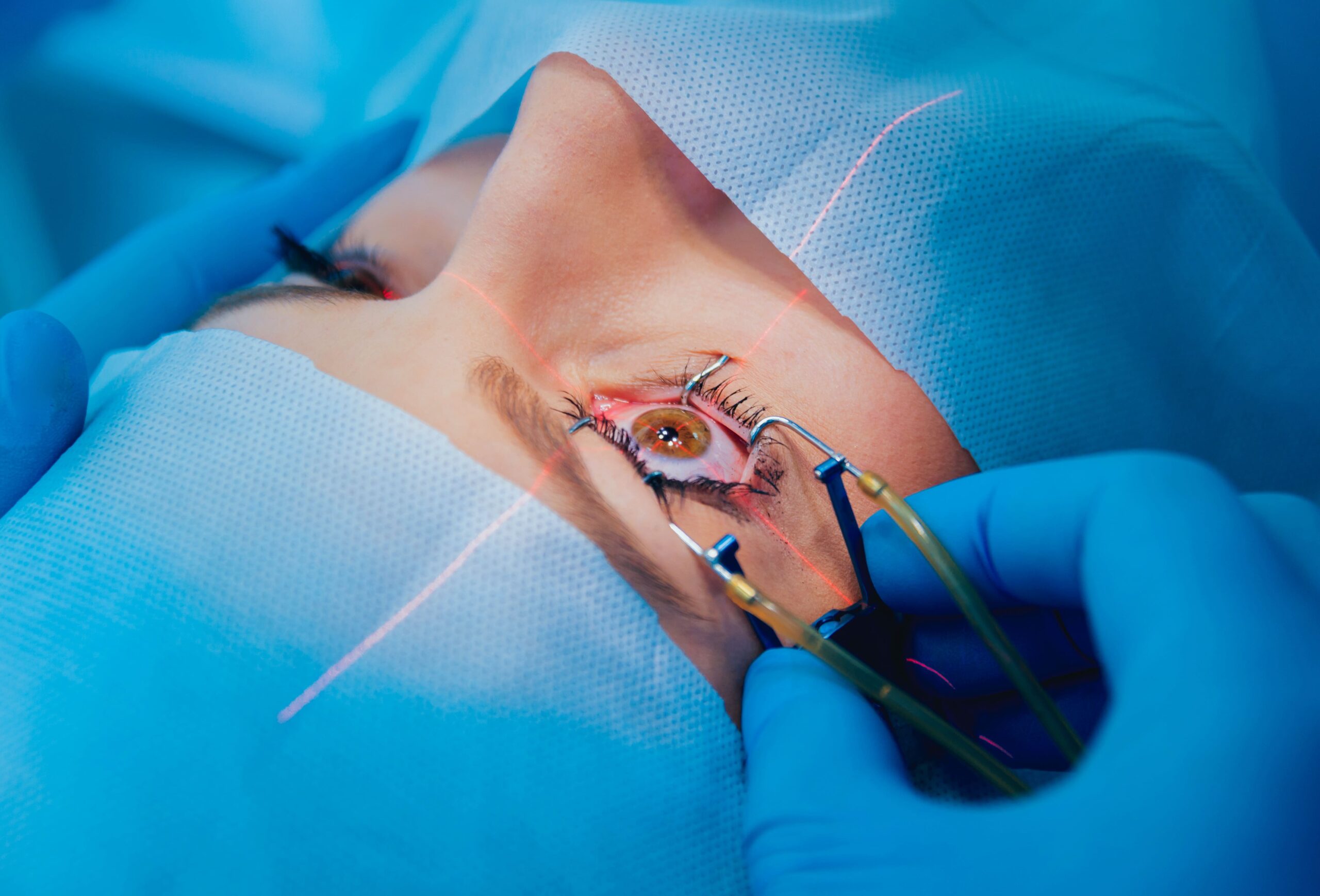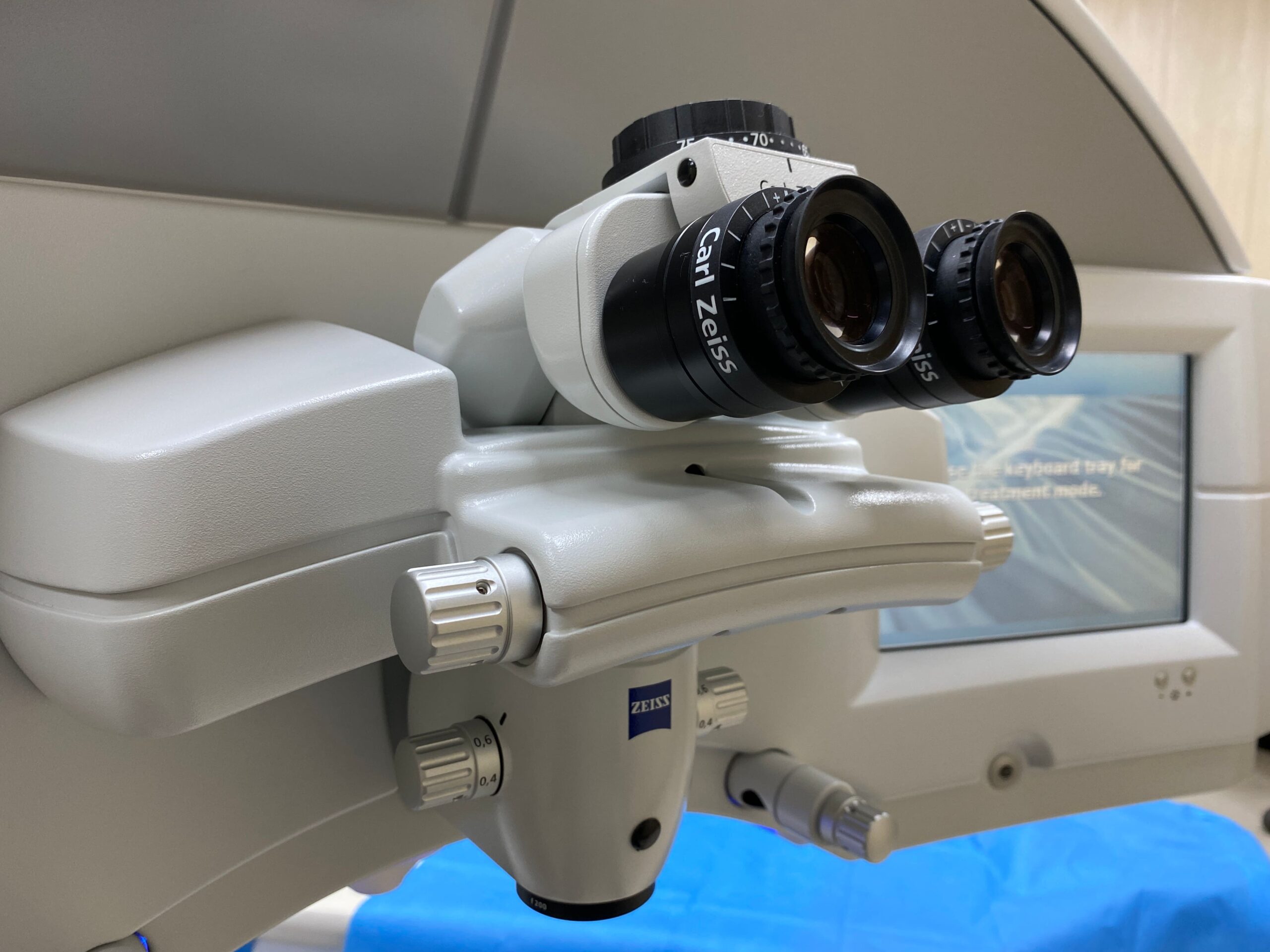
Introduction
Laser vision correction has revolutionized eye care by offering effective solutions for individuals who want to reduce or eliminate their dependence on glasses or contact lenses. Advanced laser procedures such as LASIK, PRK, and SMILE reshape the cornea to correct common vision problems, including nearsightedness, farsightedness, and astigmatism. Understanding the differences between these procedures, determining eligibility, and knowing what to expect during recovery can help individuals make informed decisions about laser eye surgery.
Understanding LASIK, PRK, and SMILE Procedures
Laser eye surgery includes several techniques, each with its unique approach to reshaping the cornea and improving vision. The three most widely used procedures are LASIK, PRK, and SMILE.
LASIK (Laser-Assisted In Situ Keratomileusis)

LASIK is the most popular laser eye surgery due to its quick recovery time and high success rate. The procedure involves creating a thin flap on the cornea using a femtosecond laser or microkeratome blade. The underlying corneal tissue is then reshaped with an excimer laser to correct refractive errors before the flap is repositioned. LASIK provides immediate improvements in vision, with most patients experiencing significant results within twenty-four hours.
PRK (Photorefractive Keratectomy)

PRK is an alternative to LASIK for individuals with thinner corneas or those at higher risk of complications from flap creation. Instead of creating a corneal flap, the surgeon removes the outer layer of the cornea (epithelium) before reshaping the underlying tissue with an excimer laser. The epithelium naturally regenerates within a few days. PRK has a slightly longer recovery period compared to LASIK but provides comparable long-term vision correction results.
SMILE (Small Incision Lenticule Extraction)

SMILE is a minimally invasive laser procedure that does not require the creation of a corneal flap. Instead, a femtosecond laser is used to create a small disc-shaped piece of tissue within the cornea, which is then removed through a small incision. This technique preserves corneal stability and reduces the risk of dry eye syndrome, making it an excellent option for individuals with higher prescriptions or those engaged in contact sports.
Who is a Good Candidate for Laser Eye Surgery?
Not everyone is eligible for laser vision correction. Several factors determine whether a person is a suitable candidate for the procedure.
Ideal Candidates for Laser Eye Surgery
- Individuals with stable vision prescriptions for at least one year
- Those diagnosed with nearsightedness, farsightedness, or astigmatism within treatable ranges
- People with healthy corneas and sufficient corneal thickness
- Individuals free from eye diseases such as glaucoma, cataracts, or keratoconus
- Patients in good overall health with no uncontrolled autoimmune conditions
- Individuals with realistic expectations about the outcomes of the procedure
Who May Not Be a Good Candidate?
- People with severe dry eye syndrome or chronic eye infections
- Individuals with excessively thin corneas that cannot safely undergo laser reshaping
- Pregnant or breastfeeding women due to hormonal changes that affect vision stability
- Patients with autoimmune disorders such as lupus or rheumatoid arthritis, which may impair healing
- Individuals with unstable vision prescriptions that have changed significantly within the past year
A comprehensive eye examination by an experienced ophthalmologist is necessary to determine candidacy for laser vision correction.
Costs, Insurance Options, and Financing Plans
The cost of laser vision correction varies based on the type of procedure, surgeon expertise, and geographic location.
Average Costs of Laser Eye Surgery
Procedure
LASIK
PRK
SMILE
Estimated Cost Per Eye
$2,000 – $3,500
$1,800 – $3,200
$2,500 – $3,800
Does Insurance Cover Laser Eye Surgery?
Laser vision correction is considered an elective procedure, meaning most health insurance plans do not cover it. However, some insurance providers offer discounts through affiliated eye care providers. Vision insurance plans may also cover pre-operative and post-operative consultations.
Financing and Payment Options
Many eye surgery centers offer flexible payment plans and financing options, including:
- Health Savings Accounts (HSA) and Flexible Spending Accounts (FSA): These tax-advantaged accounts can be used to pay for laser eye surgery.
- Medical Financing Programs: Many clinics partner with third-party lenders offering low or zero-interest monthly payment plans.
- Clinic Payment Plans: Some surgeons provide in-house financing options with manageable installment payments.
Prospective patients should discuss pricing, available payment options, and potential discounts during their consultation.
Success Rates and Long-Term Effectiveness
Laser vision correction has an excellent track record for safety and effectiveness. Studies show that the vast majority of patients achieve significant vision improvement, often reaching 20/20 vision or better.
Success Rates by Procedure
- LASIK: Over ninety-six percent of patients achieve 20/20 vision or better.
- PRK: Around ninety percent of patients achieve 20/20 vision, with gradual improvement over time.
- SMILE: Provides similar outcomes to LASIK, with a high success rate and minimal side effects.
While results are long-lasting, some individuals may experience mild vision changes over time due to natural aging. In some cases, an enhancement procedure may be required several years later to maintain optimal vision.
How to Prepare for Your Procedure and Post-Surgery Care
Pre-Surgery Preparation
- Schedule a comprehensive eye examination to confirm eligibility and discuss expectations with the surgeon.
- Stop wearing contact lenses several days to weeks before the procedure, as advised by the doctor, to allow the cornea to return to its natural shape.
- Avoid using eye makeup, lotions, or creams on the day of the surgery.
- Arrange for transportation, as patients cannot drive immediately after the procedure.
- Follow all pre-operative instructions provided by the eye clinic.
Post-Surgery Care and Recovery Tips
- Rest and keep eyes closed for the first few hours after surgery to promote healing.
- Use prescribed eye drops to prevent infection and reduce inflammation.
- Avoid rubbing or touching the eyes for at least a few weeks to prevent complications.
- Wear protective eyewear, especially during sleep, to avoid accidental eye contact.
- Stay away from swimming pools, hot tubs, and dusty environments for at least two weeks.
- Follow all follow-up appointment schedules to monitor progress and ensure proper healing.
Most patients can return to normal activities within a few days, with full vision stabilization occurring over a few weeks.
Final Thoughts

Laser vision correction offers a safe and effective way to achieve clear vision without dependence on glasses or contact lenses. Understanding the differences between LASIK, PRK, and SMILE, determining eligibility, and considering the financial aspects can help individuals make the best decision for their vision health. Consulting with an experienced ophthalmologist is the best way to explore treatment options and achieve optimal results.

